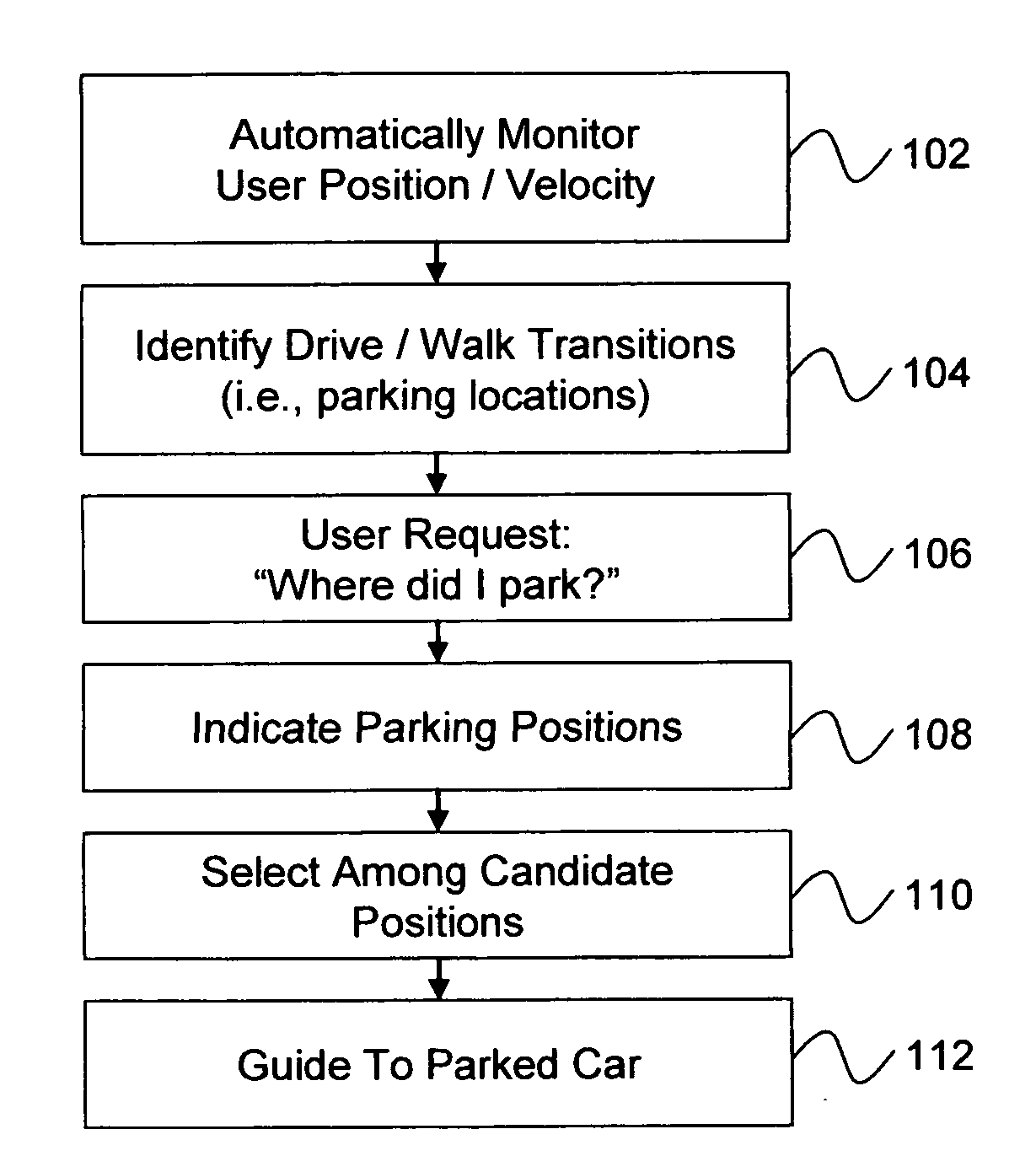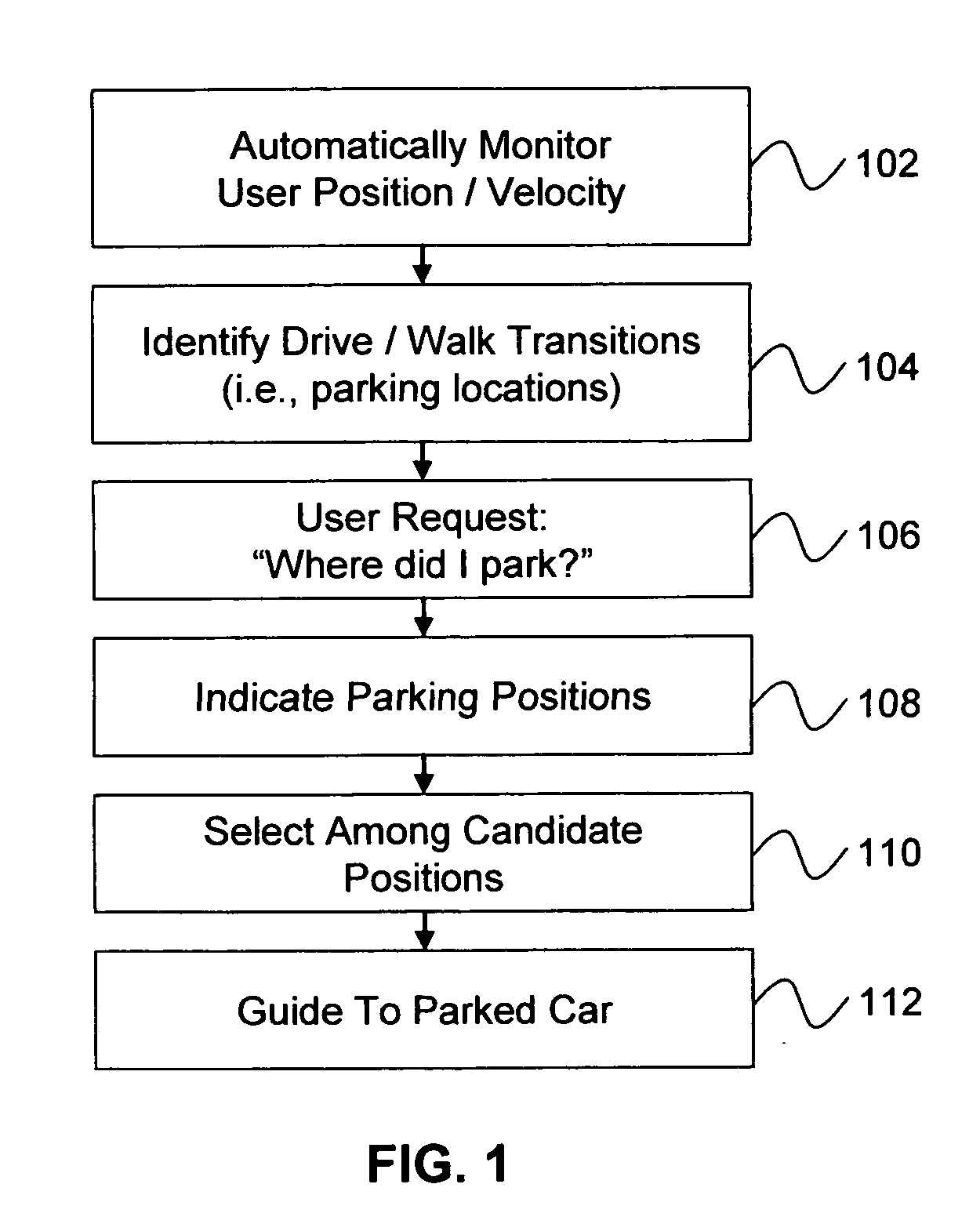Car-finder method and aparatus
a technology of car-finder and vehicle, applied in the direction of road vehicle traffic control, vehicle components, instruments, etc., can solve the problems of increasing serious problems, unable to solve solutions within a few yards, and many people tend to be absentminded
- Summary
- Abstract
- Description
- Claims
- Application Information
AI Technical Summary
Benefits of technology
Problems solved by technology
Method used
Image
Examples
Embodiment Construction
Theory of Operation
[0097]The fundamental operation of the device is shown in FIG. 1. The user's location is continually monitored. These locations are processed automatically to identify transitions between walking and driving, that is, parking spots. When one realizes that one's car has been misplaced, one activates the car-finder function added to the cell phone. The last parking spot is typically where the car was left. The user may also be provided information to confirm whether this is the correct location, and to select another among other recorded parking spots. The device then guides the user to the selected parking spot, and hence, to the vehicle.
Operation of Invention—Preferred Embodiment
[0098]The operation of the device, method, and system is best summarized by walking through progressively more complex usage scenarios. Further details are discussed in the context of the individual figures.
[0099]Consider the following situation: a harried user drives loops around the exte...
PUM
 Login to View More
Login to View More Abstract
Description
Claims
Application Information
 Login to View More
Login to View More - R&D
- Intellectual Property
- Life Sciences
- Materials
- Tech Scout
- Unparalleled Data Quality
- Higher Quality Content
- 60% Fewer Hallucinations
Browse by: Latest US Patents, China's latest patents, Technical Efficacy Thesaurus, Application Domain, Technology Topic, Popular Technical Reports.
© 2025 PatSnap. All rights reserved.Legal|Privacy policy|Modern Slavery Act Transparency Statement|Sitemap|About US| Contact US: help@patsnap.com



